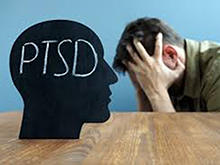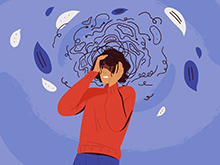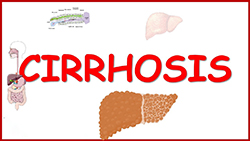Post-traumatic stress disorder is a psychiatric disorder that occurs in response to trauma and is characterized by avoidance of related stimuli, symptoms of intrusion, negative changes in mood and cognition and alterations in reactivity; the distress experienced by patients interferes with daily life and social interactions. The effects of PTSD last long after exposure to the traumatic event and patients re-experience the trauma, remain nervous and anticipate what may go wrong next. This disorder is classified in the DSM-5 under the “Trauma- and Stressor-Related Disorders”. According to the American Psychiatric Association 3.5% of the adult population in the country is affected by the disorders every year. In women, the risk of developing PTSD is approximately twice as that in men and a majority of patients with PTSD also have another pre-existing psychiatric disorder. According to a study 31% of female rape victims in the US developed PTSD out of which 11% did not remit. Patients may become depressed, have flashbacks and memory loss and experience emotions like anger and guilt. For a person to be diagnosed with PTSD they must experience certain symptoms for at least one month after the trauma. These symptoms must not be induced by other illnesses or drugs and include avoiding thoughts associated with the trigger, intrusive and repetitive thoughts, distress in social and occupational aspects of life, negative mood in response to the trigger and hyper-reactivity.

Pathophysiology of PTSD:
There are certain changes that take place in the brains of patients with PTSD. They include increased activity in the amygdala and hippocampal atrophy. The excitatory functions of glutamate increase and inhibitory gamma-amino butyric acid functions decrease. There is increased sympathetic stimulation mediated by higher levels of corticotropin releasing factor (CRF) induced release of noradrenaline. 5-HT1B (serotonin) receptor dysfunction makes the symptoms more severe.
What Causes PTSD:
PTSD is triggered by a traumatic event with symptoms lasting long after the experience. Trauma can be in the form of:
(i) Actual or threatened death
(ii) Sexual abuse and torture
(iii) Medical conditions and diseases including those resulting from accidents
Risk Factors For Developing PTSD:
There are many factors which increase the risk of and predispose to PTSD, these include:
(i) Genetics
(ii) Substance use disorder
(iii) Low IQ
(iv) Military service
(v) Co-existing psychiatric disorders
Signs and Symptoms Of PTSD:
Some patients present with delayed expression PTSD (symptoms arise at least 6 months after exposure), This type is more common in people who experience combat while others present with the “dissociative” type of PTSD and have out of the body experiences and are detached from the environment. The signs and symptoms of PTSD include:
1. Nightmares
2. Flashbacks
3. Avoiding reminders and resist talking about the traumatic event
4. Distortions in thought like hypervigilance

5. Severe anxiety
6. Memory loss
7. Emotional dysregulation like anger, guilt and sadness
How To Manage PTSD:
PTSD is managed by different types of psychotherapy like cognitive behavioral therapy (CBT) and antidepressant medication. Selective serotonin re-uptake inhibitors (SSRIs) (paroxetine, fluoxetine and sertraline) are the first line drugs. The recreational drug “ecstasy” otherwise known as MDMA (3,4-Methylenedioxymethamphetanine) has empathogenic effects and is a novel therapy. MDMA-assisted psychotherapy (patients are dosed with MDMA in a clinical setting) improves PTSD symptoms in a significant number of patients. Exercising, keeping busy and staying drug free helps in coping.




